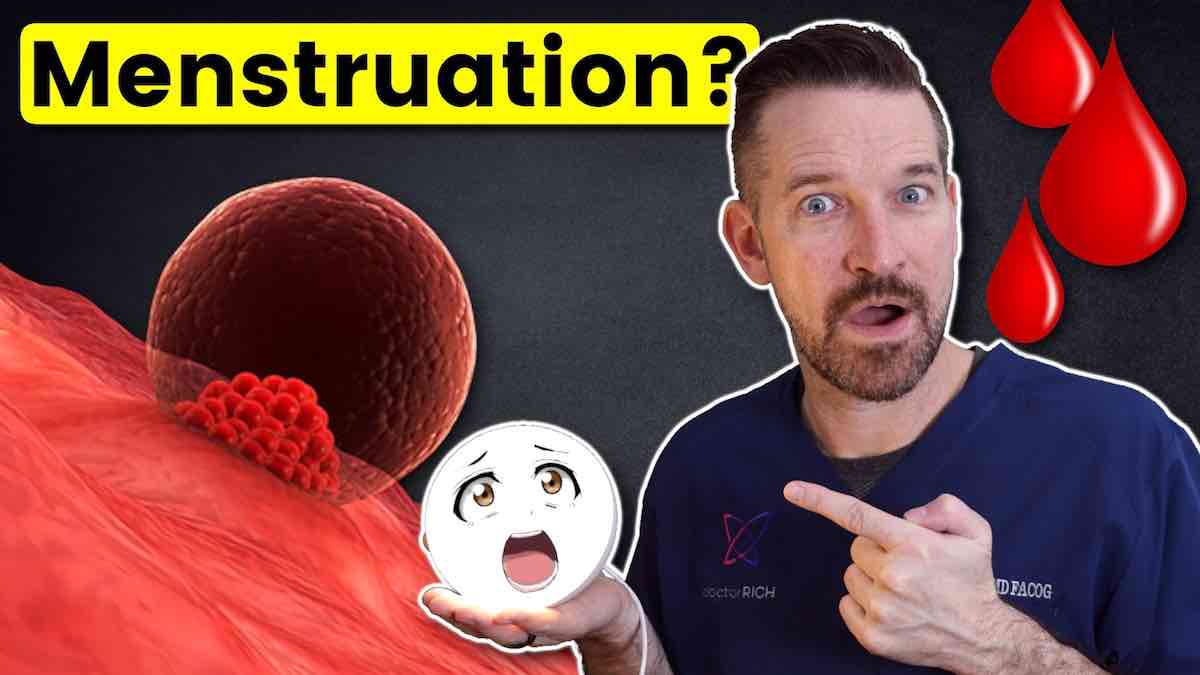Welcome back to the Dr. Rich channel. Today, we’re going to talk about “Can you get pregnant if you have endometriosis?” We’ll get to that! We also have to understand that there are stages of endometriosis — which we’ll break down in today’s video.
Don’t have time to read this post? Watch the video here instead!
Doctor Rich:
Hi, I’m Doctor Rich, and my passion is to provide every woman with practical knowledge about the world of women’s health.
Where does endometriosis come from anyway? (You can check out the retrograde theory of menstruation in our former video here.)
I’ve had several viewers comment that this theory has been disproven — so we’re gonna set the record straight: Nobody knows where endometriosis comes from. One of the longest held theories is Sampson’s Theory of Retrograde Menstruation — meaning that the endometrial tissue in the lining of the uterus doesn’t all come out through the vagina on your period. Some of it backs out through the tubes — and implants in the peritoneal cavity as endometriosis.
The primary support for this theory is that some women have blockages that don’t allow the menstrual fluid to come from the uterus out through the vagina (as a kind of a birth defect).
These women have an extremely high correlation with endometriosis because all of that tissue has to go back out through the tubes — and then becomes endometriosis. So clearly, this is a cause for endometriosis (in some circumstances), but it cannot explain ALL instances of endometriosis. We’ve found that up to 90% of women undergo retrograde menstruation, and statistically about 10% of women actually have the disease. So there has to be another explanation.
So where else can endometriosis come from? All of the following are alternative explanations for how endometriosis can occur. There are theories for:
- lymphatic spread from the uterus
- vascular spread from the uterus
- coelomic metaplasia (meaning the cells just transform from peritoneal cells into endometriosis cells)
- stem cells
- Müllerian rest bone marrow stem cells
- embryonic vestiges (meaning there are cells that are left over from early development when you were a baby and now have become endometriosis)
So what is the evidence that there have to be alternative explanations for where endometriosis comes from? Well, part of that comes from the fact that endometriosis can appear practically anywhere in the body. We’ve actually done a video on unusual signs of endometriosis that you can check out here.
But where else can endometriosis occur besides the ovaries, the ligaments, the bowel, and the bladder? Other locations where endometriosis has been found include:
- the appendix
- the vagina
- the small bowel
- within the scar of a C-section
- the belly button
- the ureter
- the breast
- the pancreas
- the liver
- the gallbladder
- kidneys
- urethra
- within the arms and legs
- vertebra
- bone
- peripheral nerves
- spleen
- diaphragm
- central nervous system
- hymen
- lung
- and in men!
One of our subscribers, Tresbee, recently commented, “Do a video on the stages of endometriosis.” Now, there are several scoring systems. The ASRM is the most widely used system.
As you can see, in the example here [an evaluation document appears on the screen], there are different stages. Stage one simply means there are small isolated lesions of endometriosis. This is classified as “minimal.” Stage two is mild disease, and what this means is there are endometriosis implants — but in aggregate make up less than five centimeters of total disease (and typically don’t involve damage to the tubes, or implant on the ovaries).
Now stage three disease is moderate disease. Stages three and four are considered advanced stage disease, and one and two are considered early stage disease. With stage three, we’re talking about both superficial on top of ligaments, as well as deep infiltrating lesions of endometriosis that in total make up more than five centimeters in aggregate of disease — and can involve adhesions on the ovaries and tubes. Stage four is considered the worst stage of disease, and there are a wide variety of different types of stage four. These can involve an obliteration (or complete fusion) of the uterus to the colon, as well as large endometriomas — or endometriosis containing ovarian cysts. There are also multiple superficial and deep lesions as well as dense adhesions. You can check out our video on ovarian cysts here.
So the question is, “What is the worst stage to have, and how does that correlate with the patient’s symptoms?”
Well, there’s actually relatively poor correlation! A patient with stage one disease can have horrible pain, and a patient with stage four disease may never even know that they have endometriosis because they don’t have symptoms.
So what’s the point in having a staging system at all? Well, mainly this is a way that doctors can compare from one surgery to another surgery — or to communicate the amount of disease from one surgeon to another. And although the staging does not correlate well with the symptoms, there is a very strong correlation between the amount of disease (the disease burden), and your ability to get pregnant. So the more disease, the less chances you have of getting pregnant on your own — and the more likely you are to need medications and other assisted reproductive techniques.
So to answer the question, “Can you get pregnant if you have endometriosis?” In many cases, you can get pregnant. Endometriosis is known to affect fertility, but there are medications that can overcome that barrier. Some patients may require surgical excision of endometriosis, which is preferable to ablation. And you just need to find an expert that is skilled in laparoscopic or robotic removal of endometriosis.
Thanks for watching! Please like and subscribe.




